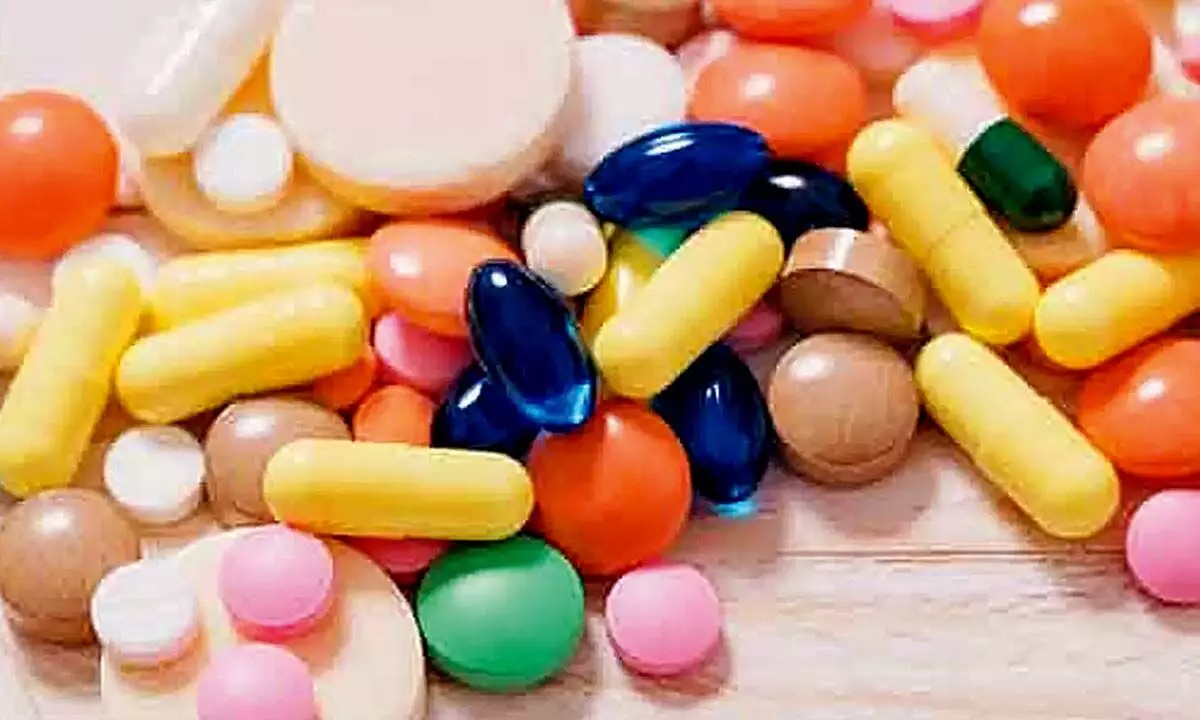A slew of schemes to arrest rising bulk drug imports
The growth of bulk drugs imports compared to financial year 2019-20 was almost 41.5% in 2021-22
image for illustrative purpose

Besides PLI scheme, the Indian govt has launched a bulk drug parks scheme. A bulk drug will be a designated portion of land having an area not less than 1,000 acre, exclusively utilised for manufacturing of bulk drugs. These schemes will minimise India's dependence on imports and to give fillip to indigenous manufacturing
Imports of bulk drugs and drug intermediates from China to India have increased by around 20 per cent in the fiscal year 2021-22, and accounted for almost 66 per cent of the total imports during the year. Total imports from China during the fiscal year 2021-22 was Rs 23,273 crore, as compared to Rs 19,403 crore during the previous fiscal year. The growth of imports compared to financial year 2019-20 was almost 41.5 per cent in 2021-22, as the year 2019-20 reported imports of Rs 16,443 crore worth of bulk drugs and drug intermediates from China.
In terms of quantity, imports from China were at 2.65 lakh metric tonne (MT) during 2021-22, as compared to 2.57 lakh MT in 2020-21 and 2.21 lakh MT in 2019-20. The total imports of bulk drugs and drug intermediates were at Rs 35,249 crore, which is 4 lakh MT during financial year 2021-22, as compared to Rs 28,529 crore at 3.90 lakh MT during the previous fiscal, registering a 23.55 per cent growth in terms of value. In the year 2019-20, the country imported Rs 24,172 crore worth of bulk drugs and drug intermediates, which was around 3.64 lakh MT in terms of volume.
It is true that India is one of the major producers of Active Pharmaceutical Ingredients (APIs) or bulk drugs in the world. India exported bulk drugs and drug intermediates worth Rs 33,320 crore in the financial year 2021-22. However, the country also imports various bulk drugs and other APIs for producing medicines from various countries including China. According to government data, export of bulk drugs and drug intermediates from India to other countries inched up 1.4 per cent during the financial year 2021-22 as compared to the previous year.
With the exports registering a meagre 1.4 per cent growth in the year 2021-22, the imports was almost six per cent higher than exports during the year. The total exports of bulk drugs and intermediates during the year 2021-22 was Rs 33,320 crore (4.53 lakh MT), as compared to Rs 32,857 crore (3.24 lakh MT) in the years 2020-21 and Rs 27,533 crore (2.71 lakh MT) in 2019-20. During the year 2021-22, the country has exported pharmaceuticals worth Rs 1,75,040 crore as compared to Rs 1,74,064 crore, with a less than one per cent growth though in terms of volume, it has registered a growth of 67.4 per cent at 10,75,906 MT as compared to 6,42,718 MT during the year 2020-21.
Surely, the Indian government is seized of the issue as it has already taken some initiatives to encourage domestic manufacturing of bulk drugs. In order to make the country self-reliant in APIs and drug intermediates, the Department of Pharmaceuticals is implementing three schemes - the Production Linked Incentive (PLI) Scheme for promotion of domestic manufacturing of critical Key Starting Materials (KSMs)/Drug Intermediates and APIs in India with a financial outlay of Rs 6,490 crore; PLI Scheme for Pharmaceuticals with a financial outlay of Rs 15,000 crore; and the Scheme for Promotion of Bulk Drug Parks with a financial outlay of Rs 3,000 crore.
The Indian government has approved the Production Linked (PLI) Scheme for pharmaceutical industry for the financial period of 2020-21 to 2028-29. The major aim of the PLI scheme is to create an environment that is favourable for domestic API manufacturers. This scheme is expected to provide an employment opportunity directly as well as indirectly and provides a wide spectrum of medicines at an affordable price. The PLI scheme provides an incentive on the basis of the sale by selected manufacturers who cover all 53 pre-mentioned categories of API. Some of the API categories include Cefixime, Amoxicillin, Cephalexin, Sulbactam, Metformin and Gabapentin. Besides PLI scheme, the Indian government has launched a bulk drug parks scheme. A bulk drug will be a designated portion of land having an area not less than 1,000 acre, exclusively utilised for manufacturing of bulk drugs.
These infrastructure facilities decrease the manufacturing costs and give rise to domestic competition since states like Himachal Pradesh, Andhra Pradesh, Gujarat, Haryana, Tamil Nadu, Punjab and Maharashtra have shown interest in investment. The primary objective of this scheme is to provide easy access to bulk drug units which thereby reduces the cost for manufacturing and optimises the resources and economies. The promotion of such parks has a size of Rs 3,000 crore, providing aid for 3 drug parks or 70 per cent of the cost behind the common infrastructural facilities and in the case of hilly areas, 90 per cent the cost behind the common infrastructural facilities. Obviously, these schemes will minimise the country's dependence on imports and to give fillip to indigenous manufacturing.
(The author is freelance
journalist with varied experience
in different fields)

